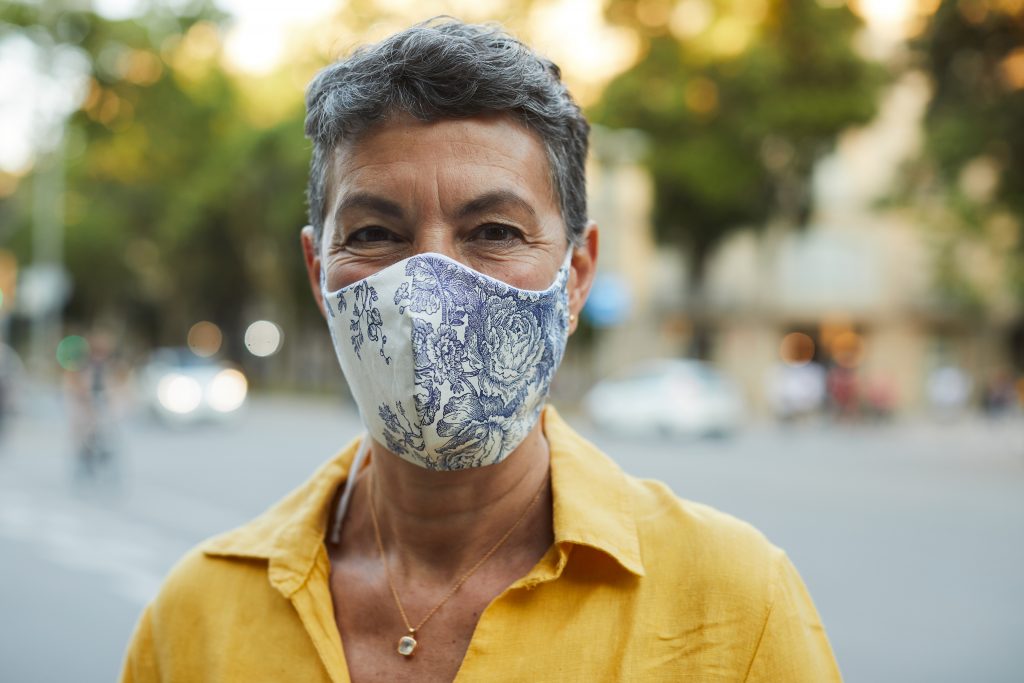Many workers wear masks and respirators when they’re on the job. They may also be a good option for people who want to reduce their exposure to harmful substances in the air.
Download Masks and Respirators – Do You Need Them as a PDF.
What’s the difference between masks and respirators?
A mask is any device that reduces your exposure to harmful things in the air. A respirator protects you from inhaling dangerous substances.
Masks and respirators reduce your exposure to
- Dust and dander
- Mold
- Fumes from paint, gasoline and natural gas
- Chlorine, sulfur dioxide, formaldehyde
- Printer’s ink
- Ozone
- Smoke
- Cold air
How to choose the right kind of mask
There are many types of masks. Each type has its own specifications for
reducing exposure to dust, mist, aerosols, particulates, or cold.
Your options include
- Washable fabric masks
- Disposable tie-on masks, like the kind hospital workers use
- Durable, industrial strength masks with filters, exhalation valves, and replaceable cartridges
You may have to do some research before you choose the mask that’s right for you. Identifying the kind of protection you need is a great place to start.
Tie-on masks
You’re probably familiar with disposable tie-on masks, especially if you watch any hospital dramas on TV. Wearing this type of mask prevents the person wearing it from spreading an infection to others. But, if you wear a mask like this, it doesn’t prevent you from getting an infection from someone else.
N-95 masks
The only mask recommended by the Centers for Disease Control (CDC) to minimize the risk of getting a respiratory infection is a mask with an “N-95 rating.” These are also called N-95 respirators. The rating means that this mask can filter out 95% of airborne particles, if it fits properly and is used correctly.
An N-95 respirator is just one of the different types of disposable particulate respirators. These types of masks are the simplest and least expensive of the respirator types available. They’re also called “air-purifying respirators,” because they filter particles out of the air.
N-95 respirators should be NIOSH approved (National Institute for Occupational Safety and Health) and should fit you properly.
Note: N-95s don’t protect against gases, fumes, chemicals, or vapors.
Make sure your mask fits properly
Breathing through a mask may be difficult if you have existing breathing problems. But, with so many models to choose from, you’ll probably find one that works for you.
Here are some simple tips to keep in mind to ensure a proper fit:
- Your mask should fit securely over your nose and mouth, creating a seal.
- If you have a beard, you may have to shave or trim facial hair to achieve a good seal.
- Using a nasal cannula for oxygen may prevent a tight seal.
- Adjust the nose clip, if your mask blocks your vision.
- Adjust the straps for a snug, comfortable fit.
- Check for unwanted gaps.
Note: Is the mask reusable, washable, or disposable? If so, follow the manufacturer’s handling and cleaning procedures.
No mask offers 100% protection. Good handwashing is still your #1 way to prevent getting and spreading infections.
For more in-depth information on this topic, please visit the Big Fat Reference Guide. If you are enrolled in AlphaNet’s Subscriber Portal, you can access the BFRG here.
Download Masks and Respirators – Do You Need Them as a PDF.

